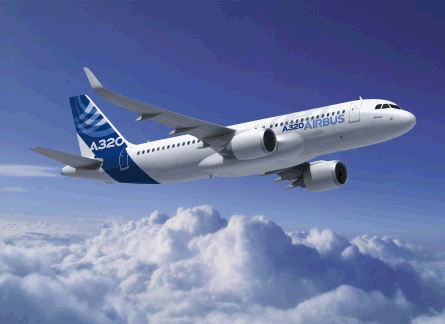Airbus has thrown down the gauntlet to its rivals in the single-aisle sector with the launch of its A320 New Engine Option (NEO).
What it means is that after 15 years of relative stability in the mainline single-aisle market, airlines now have a third choice which, while eliminating engine commonality for today's A320 operators, promises a double-digit reduction in fuel burn when it arrives in Spring 2016.
The launch, which despite much talk by Airbus all year was not a foregone conclusion, came without the usual raft of customer commitments. But Airbus is bullishly forecasting a market for 4,000 aircraft and its chief salesman John Leahy says that the first NEO sales are just around the corner: "We are talking to quite a few airlines and leasing companies right now," he says. "I'm sure we'll very quickly have a couple of hundred orders."
 |
|---|
However Bombardier is putting positive spin on the development, saying that Airbus has endorsed its decision to opt for the GTF and that it had always envisaged such a response from rivals when defining the CSeries. As such, it is confident that the CSeries will easily have the measure of the A320 NEO and now Airbus has to "put its money where its mouth is" and present performance claims to customers that it is prepared to sign up to.
The NEO's arrival could also force some sort of response from Boeing, for whom a re-engining is more complex due to the 737's already limited ground clearance. The US airframer, which is in the midst of introducing its own mid-life update for the 737 that promises a couple of percent improvement, may decide to leapfrog the NEO with an all-new airliner at the end of the decade.
Leahy dismisses the idea of such a prospect, saying: "An all-new airframe coming out 2020 would have the exact same engines as the NEO but would cost around $12 billion in development costs which would have to be passed on to the customer. With the A320 we have an aircraft that is already way ahead of its time and we are making it much better."
While it should be a buyer's market during the next few months as Boeing and Bombardier seek to disrupt Airbus's efforts to establish a foothold, NEO's arrival has not been greeted with open arms in some quarters. Bert van Leeuwen, DVB Bank SE's managing director Aviation research, warns that the uncertainty that NEO brings to the market threatens an end to "the golden age of aircraft leasing" as it may unsettle the equilibrium that has allowed investors to put billions into narrowbody acquisitions with confidence in their future values.
Airbus's executive vice-president and head of strategy and future programmes Christian Scherer counters by saying: "I would call the opportunity for airlines to cut their fuel bill by 15% progress, or value, but I wouldn't call it uncertainty."
Scherer believes NEO will increase rather than decrease the A320 programme's value, and sees no reason why it could destroy the financial institutions' business model. "Their customers are the airlines, and they will buy the NEO because it will burn 15% less fuel," he says.
Sister publication Commercial Aviation Online canvasses bankers about the NEO
Source: Airline Business



















